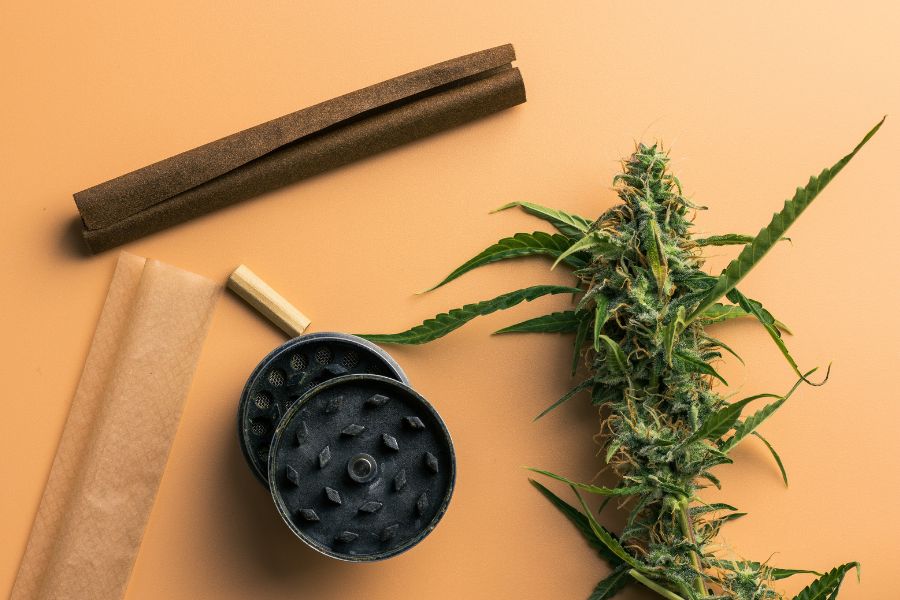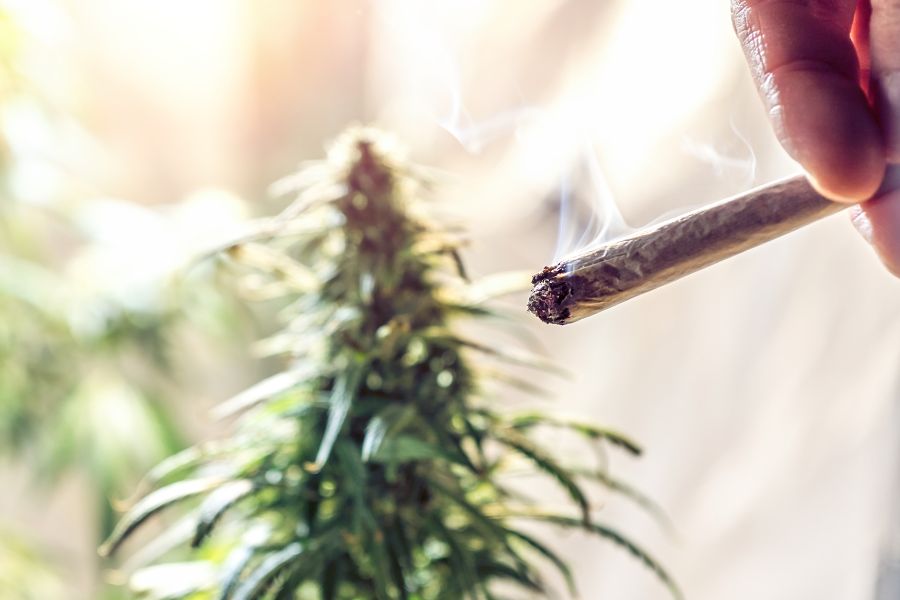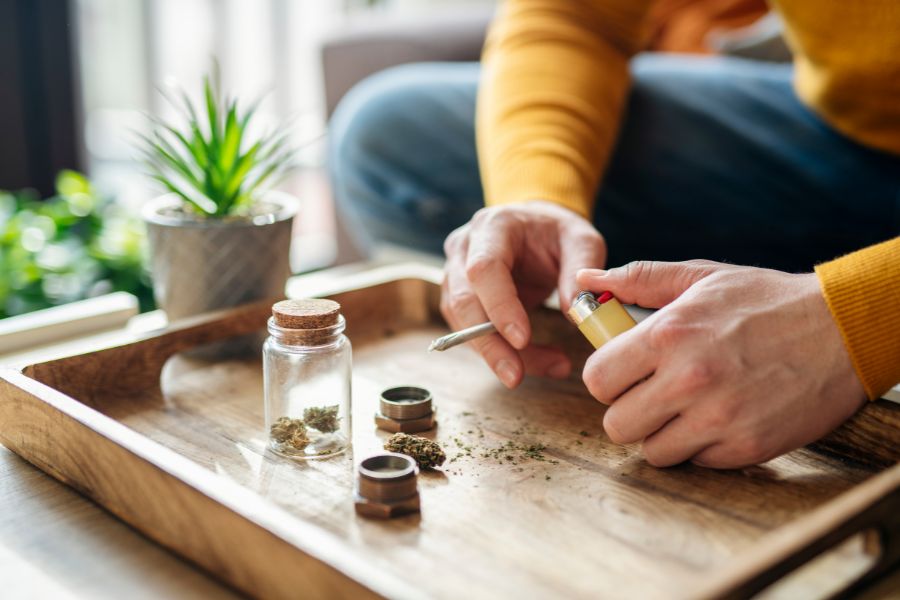Key Takeaways
- Recognizing how much cannabis your body can handle and identifying signs of overconsumption is key to avoiding negative experiences.
- The method of ingestion and the THC potency greatly influence the duration and intensity of the high, affecting your risk of feeling overwhelmed.
- Engaging in responsible cannabis use and knowing safety protocols, including when to seek medical assistance, are essential for ensuring a positive experience.
Cannabis, valued for its medicinal and recreational benefits, has grown in popularity as legal restrictions ease and cultural acceptance increases.
While generally seen as less harmful than stronger drugs, the effects of cannabis can still be significant, especially if overused. New and veteran users must understand how long a high lasts and what factors affect its duration.
We will explore key elements such as consumption methods, strain potency, individual metabolism, and dietary habits. By understanding these factors, users can responsibly enjoy cannabis and ensure a safer, more enjoyable experience.
What Happens During a Weed High?

During a weed high, THC interacts with the brain, triggering a variety of sensations that vary among individuals. Commonly, users experience euphoria, enhanced sensory perception, and deep relaxation.
Some might encounter spontaneous laughter and a distorted sense of time, while others could feel introspective or anxious.
These effects emerge soon after consumption, with their intensity and duration depending on the ingestion method and THC dose. Knowing these experiences helps users manage their highs more effectively.
Factors Affecting the Duration of a Weed High
#1 Method of Consumption
Smoking or Vaping
The duration of a weed high can be significantly influenced by the method of consumption. When smoking cannabis or vaping cannabis, the effects typically set in quickly, often within minutes.
The peak of the high usually occurs within the first 30 minutes to an hour, with the overall experience generally lasting between 1 to 3 hours. Understanding these timelines can help users anticipate the course of their high and make informed choices about consumption methods.
Edibles
The onset and duration of a high from cannabis edibles are distinctively different from smoking or vaping. Edible cannabis affects take longer to manifest, typically from 30 minutes to 2 hours after consumption.
Once they set in, the high can last anywhere from 6 to 8 hours, sometimes extending up to 24 hours, depending on factors like the potency of the THC, individual metabolism, and the amount consumed.
This delayed and prolonged effect requires users to approach edibles cautiously, particularly in dosage and timing.
Dabbing
Dabbing cannabis concentrates leads to immediate and intense effects due to the high THC levels. Typically, the high sets in almost instantaneously and can be quite powerful.
The high from dabbing can last 1 to 3 hours, though it may persist longer depending on the amount consumed and the individual’s tolerance. Users should know the potency and quick onset associated with dabbing to manage their experience effectively.
#2 Dosage and Potency

The dosage and potency of THC play crucial roles in determining the duration and intensity of a weed high. Higher THC concentrations typically lead to more intense and prolonged effects.
Similarly, the amount of cannabis plant consumed directly affects how long the high will last; larger doses extend the duration. Users should carefully consider both the strain’s potency and their chosen dosage to tailor the experience to their preferences and tolerance levels.
#3 Individual Factors
Metabolism
Individual factors, particularly metabolism, significantly affect how THC is processed in the body. A faster metabolic rate can lead to a quicker onset and shorter duration of a weed high, as THC is metabolized and eliminated from the body at a swifter pace.
Conversely, those with slower metabolism might experience prolonged effects. Understanding one’s metabolic rate can help in anticipating the duration and intensity of the high, enabling better management of cannabis consumption.
Tolerance
Tolerance significantly influences the duration of a weed high. Regular cannabis use can lead to increased tolerance, meaning that over time, more of the substance may be required to achieve the same effects when choosing to consume cannabis.
This adaptation can result in shorter-lasting highs for seasoned users than those who consume less frequently. Understanding the impact of tolerance is crucial for users to effectively manage their consumption and anticipate the intensity and duration of their experiences.
Body Weight
Body weight is another individual factor that affects the duration of THC effects. Typically, individuals with higher body weight may require larger doses to experience the same effects as those with lower body weight due to differences in body fat where THC is stored.
Consequently, the high might last longer for someone with a higher body fat percentage as THC is released more slowly into the bloodstream. This aspect is important for users to consider when determining their optimal dosage for desired effects.
#4 Other Influencing Factors
Food and Diet
Food and diet also play crucial roles in modifying the duration and intensity of a weed high. Consuming cannabis on a full stomach, especially with fatty foods, can enhance THC absorption, potentially intensifying and prolonging the effects.
Conversely, taking cannabis on an empty stomach might lead to a quicker onset but a shorter duration of the high. Understanding how different foods interact with cannabis can help users manage their experiences more effectively and achieve a more consistent high.
Mixing with Other Substances
Mixing cannabis with other substances, such as alcohol or different drugs, can significantly alter the effects of the high. Alcohol, for instance, can intensify the effects of THC, potentially leading to a stronger and more prolonged high.
However, this combination can also increase the likelihood of negative side effects, such as increased anxiety or nausea. Users need to be aware of these potential interactions to make informed decisions about combining substances and to ensure a safe cannabis experience.
Comparative Analysis of Consumption Methods
In comparing methods of cannabis consumption, clear differences emerge in the onset, peak, and duration of the high. Smoking or vaping yields almost immediate effects, peaking within an hour and typically subsiding after a few hours.
Edibles, however, have a delayed onset of 30 minutes to two hours, with peak effects occurring several hours later and lasting up to 24 hours. Dabbing provides immediate, intense effects akin to smoking but with a potentially longer duration depending on potency and amount used.
Practical Tips for Managing and Predicting the Duration of a High
For First-Time Users

Navigating cannabis high effectively, especially for first-time users, requires understanding and preparation. Here are some practical tips to manage and predict the duration of a high:
- Start Low and Go Slow: Begin with a low dose, particularly with edibles, and wait to see how you feel before consuming more.
- Stay Hydrated: Keep water nearby to stay hydrated, as cannabis can cause dry mouth and dehydration.
- Create a Comfortable Environment: Set up a safe, comfortable space to relax without interruptions.
- Have Support: It’s helpful to be around someone experienced with cannabis who can guide you through the process if needed.
- Be Patient: Effects can take a while to manifest, especially with edibles. Wait at least two hours before considering more.
For Regular Users
For regular cannabis users, managing tolerance and adjusting consumption to achieve the desired duration of a high is crucial. Here are some tips to help fine-tune the experience:
- Monitor Tolerance Levels: Pay attention to changes in how your body responds to cannabis and adjust dosages accordingly.
- Take Tolerance Breaks: Periodically abstaining from cannabis can help reset your tolerance levels and enhance the effects when resumed.
- Vary Consumption Methods: Switching between methods like smoking, vaping, and edibles can alter the effects and help manage tolerance.
- Control Dosage: Be mindful of the potency and amount of cannabis used to maintain control over the duration and intensity of the high.
- Stay Informed: Keep up-to-date with new strains and products that might offer different experiences and durations of effects.
Conclusion
In conclusion, the duration of a weed high is shaped by various factors, including the method of consumption, THC dosage and potency, individual metabolism, and additional elements like diet and concurrent substance use.
Understanding these aspects is crucial for both new and experienced cannabis users to manage their experiences effectively. We’ve discussed the impacts of different consumption methods and provided practical tips for responsible use.
Approaching cannabis with an informed and cautious attitude is vital. By being aware of how your body reacts and the factors influencing the high, users can safely enjoy cannabis. Responsible usage remains key to a positive and secure cannabis experience.
